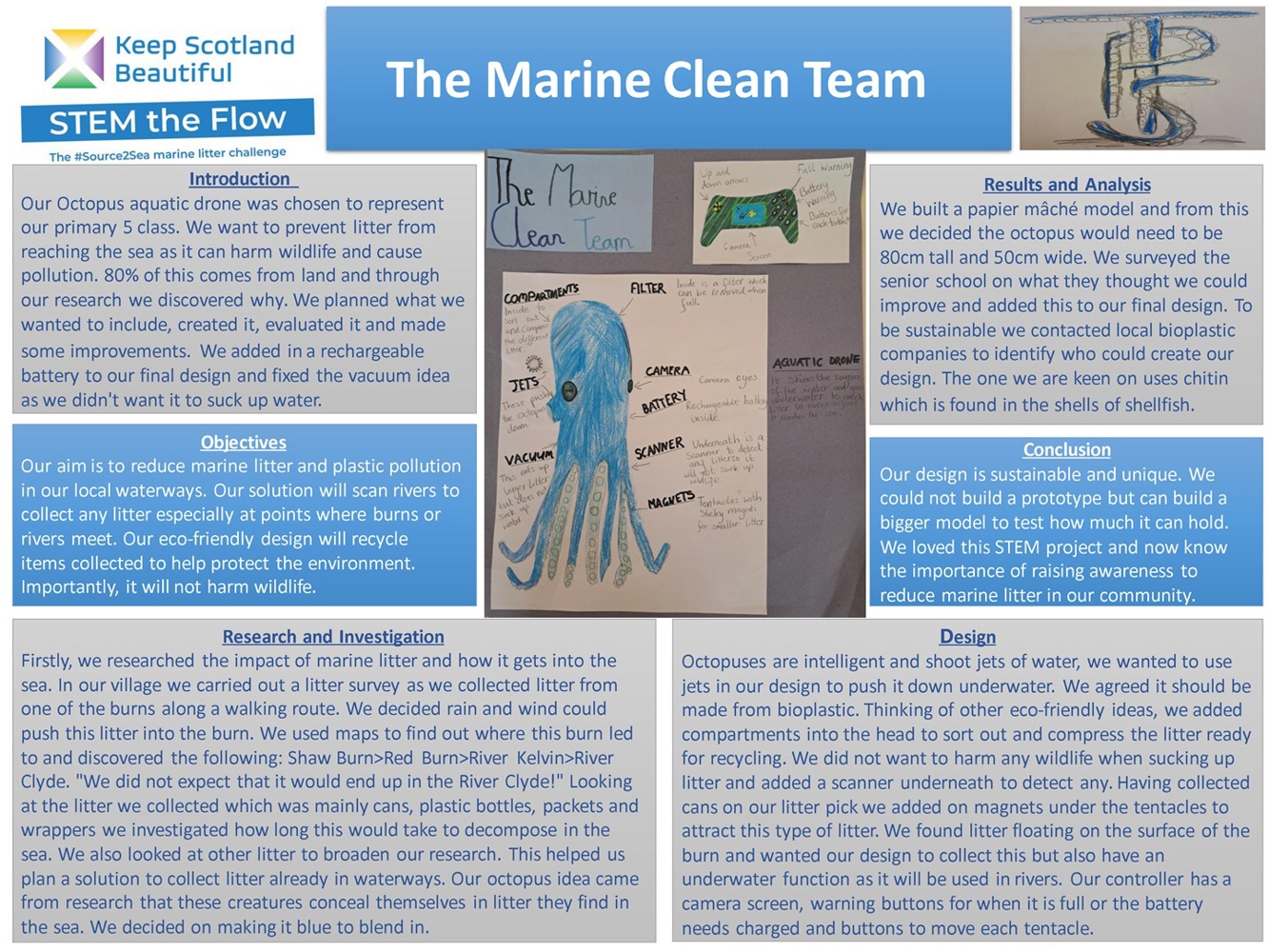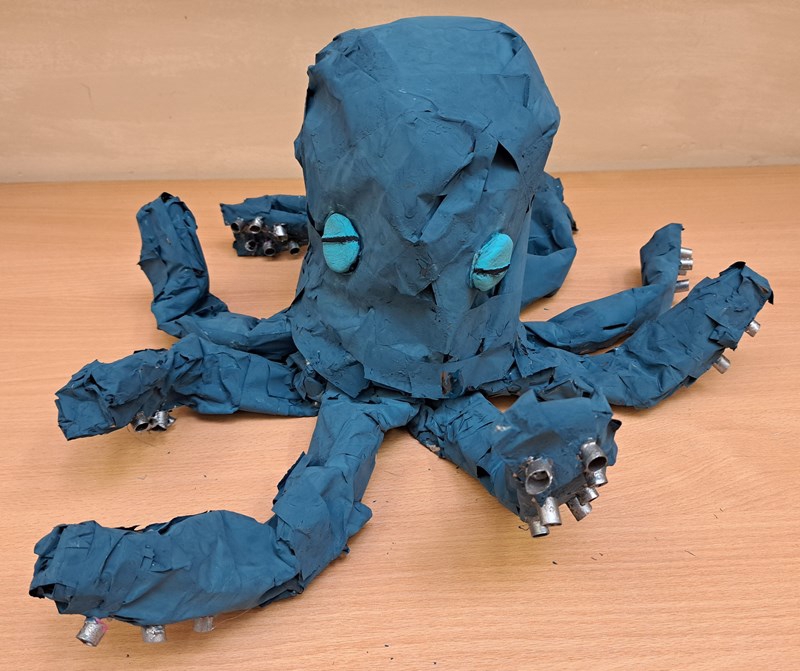Torrance Primary School
Project: The Marine Clean Team
As an introduction to the topic the primary 5 pupils were shown short videos to think about what the impact of marine litter is and how it gets into the sea. This provoked whole class discussions on the importance of this issue. In their groups the children researched the differences between burns, canals and rivers. This task led to them plotting the burns, river and canal on a map of Torrance, tracing where they connected and led to. When out investigating one local burn each group completed the litter survey before they removed the litter using litter pickers and bin bags. In class they presented their findings of what they had observed and discussed how it could have got there.
Using the decomposition activity from the first STEM the Flow workshop, each group estimated how long different pieces of litter would take to decompose in the sea before they looked up the correct answers. With this background research now complete it was time to start planning. Each group discussed ideas and what was important to them. They decided their design would collect litter already in the waterways. Next, they used the design and planning worksheet to populate ideas and research these further. This was a pupil-led project where they worked together on different aspects before deciding on a design.
Scientific Poster


The chosen solution is an aquatic drone to look like an octopus with jets inside to push it down into the water and vacuums to suck up litter underneath in the body. Here there is a scanner to detect only litter instead of sucking up wildlife. The tentacles have sticky magnets underneath for smaller litter to attach to. It has camera eyes connected to a controller with buttons to show when it is full or needs charged. Inside its head are compartments to sort out and compress the different litter for recycling. The octopus is lightweight and made from bioplastic which skims the surface of the water and can go underwater. It catches litter in rivers before it reaches the sea.
The Marine Clean Team’s design and rationale were chosen to go through to the competition. Then they worked together to expand on their initial design to improve it. One drew out the updated octopus while another designed a logo with tentacles using the school initials. Others researched their bioplastics idea further, taking notes and with their teacher contacting companies within the West of Scotland. They labelled parts on the design with any updated information. For the papier mâché model all the group worked to plan how it could have bendy tentacles, how to make the head and attach it. They worked on different parts creating a colour which would blend with the river. For the magnets individuals cut and painted straws silver before gluing them to the tentacles. Others presented to the senior classes for their input to make improvements. Therefore, the group added in a rechargeable battery and amended the vacuum so it would not suck up any water.
We did not expect that litter would end up in the River Clyde!
We support the 


